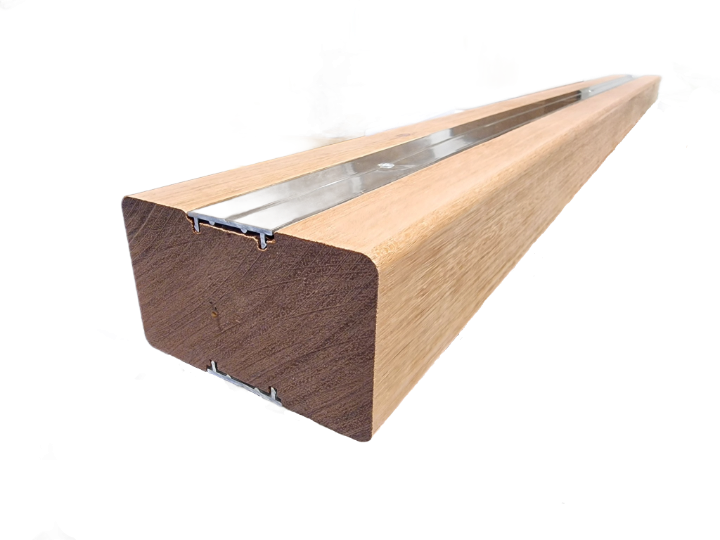We had previously shared some indicative images, but here we share the first, detailed image of our new brand innovation.This innovation ensures that several untreated(!) wood types up to fire reaction class B-s1,d0 according to EN 13501-1:2018 are optimized.
An intelligent, non-flammable profile is integrated on the two sides.
By integrating them into the sides, this is minimally visible and you have an identical fire reaction class at the front and back.
After all, it is now at least as plausible that the fire starts on the inside (electric cars, etc.) than on the outside.
The non-flammable strips ensure that in this example there is at least 20% less flammable surface area.
This will affect both FIGRA and THR600.
At the same time, the positioning and width have been calculated in such a way that they form an optimal fire barrier and it is very difficult for the flame to spread to the rear.
In this way we approximately halve the flammable surface area of the slats from 80% to 40%.
Such a decrease in flammable surface area obviously also has a strong impact on the FIGRA and THR.
The fire will therefore not spread to the other side.
The intelligent aluminum extrusion profile will optimally conduct the heat away from the flame.
Where the flame is not directly present on the profile, the aluminum will also be able to emit heat or in other words; cooling.
The profile is also full of several small details that have a big impact, here are some examples:
The profile has deeper 'hooks' that, on the one hand, form a deeper fire barrier against the deeper burning of certain types of wood.
At the same time, these deeper hooks will give optimal strength to the profile and have a great impact against deformation when heated.
The spacers or bumps on the back look innocent, but have many functions.
They have the function of guaranteeing minimal contact between non-flammable profile and flammable fin (minimum heat transfer).
In addition, they ensure that the profile remains nice and straight during installation, there is no stagnant moisture and much more.
The central screw line ensures that the screws do not start to 'dance' and are therefore always mounted in the right place.
Due to this helix, the minimum machining of the aluminum will mainly go to the rear.
There are also several details, but of course we won't explain them all directly.
The first tests have shown that the theory corresponds to reality.
Several fire tests will be scheduled in the coming weeks to study the following parameters:
Slat thickness: 40 to 70mm
Slat depth: 90 - 360mm
Center to center distance: 20 - 150cm
Fire reaction class B-s1,d0 with UNTREATED wood.
In addition to this technical explanation, the slats are excellently circular and ecological.
By working with Lesser Known Timber Species in FSC® you protect large amounts of forest and its biodiversity for thirty years.
The aluminum is at least 70% recycled and we are still trying to improve this.
The slats also offer an excellent opportunity to 'upcycle' wood.
This would therefore be about wood that is recycled, but now gets a higher quality life than in its first existence.
We continue to develop...
This innovation is patent pending.

